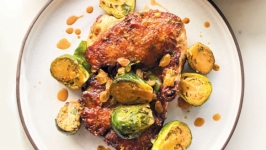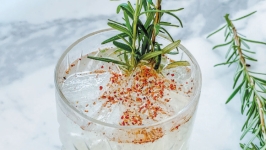Ode to a Cucumber
An ode to the humble cucumber
Cucumbers are my favorite vegetable. Grow them now. I have become an expert in Cucumis sativus, which seems immodest, but remember, we are talking about cucumbers, not chess. When people ask, they are sometimes surprised by my vegetative preference.
Folks were probably expecting me to say “tomato,” which is low-hanging fruit. Cucumbers are not royal like cauliflower or chart-toppers like sturdy Lacinato kale. Far short of the glory of a watermelon and not as intuitively savvy as garlic, with a nickname like “cuke” one should not expect much splendor.
Of course, they sprawl, which is only desirable in certain circumstances. Sprawl is an ungainly, onomatopoeic sound, self-describing its own definition, like grunge, or flaccid. As in “the grungy cucumbers were flaccid and covered with mold from sprawling on the muddy ground.”
The first time I grew the cucumbers commercially I made $2,600 a week in 1977 money, which was a far greater fortune then than now, which is still not shabby. This is why cucumbers remain a talisman. They were strung up on steel trellises, supported by custom-woven fishing net meant for cucumbers. The netting was made in Japan. You couldn’t catch a fish in such netting with six-by-six-inch holes in it. Don’t automatically surmise you could catch a really big fish that would not escape through holes that big because the netting was so light that a tuna would rip it to shreds. So forget about sharks. The trellises keep the fruit off the ground, where chewing insects would disfigure the cucumbers.
Mulch, which is another award-winning onomatopotter, is generally counterproductive because the nocturnal critters that scar the skins of the cucumber reside and hide in the mulch. So you either trellis them like a pro or devolve into sprawl.
I have grown 88.4% of all the existing cucumber varieties, including Lemon, Sikkim, Japanese, Persian, Lebanese, English, Armenian, standard pickle and American Slicer. I’m bereft of bold patriotism currently, so I may focus my production on pickles and the Lemon to match my sour mood. And, if litigiously inclined, I might suggest you run out a line of Suyo Longs, a favorite of Japanese attorneys on Hokkaido.
In the past year, we received visits from a cucumber fanatic from Santa Paula named Tim Dyer, who is entirely too animated about the fruit and has various large tattoos of the things crawling across his arms and torso. Dyer, who sobriquets by the moniker “Uncle,” is a seed detective and pickler of regional renown. Uncle Tim’s Old Country Pickles are made from unpronounceable, endangered heirloom Chinese cucumbers, as well as common American Jacksons and Northerns. (Find his pickles at select farmers’ markets and retailers in the county). I know nothing about this plant compared to Uncle Tim.
Commonwealthers know the pickle as a gherkin, which as a child I convolutedly thought the British had appropriated from the Gurkhas who hauled Himalayan pickles into battle in service to the crown. When adopting a pickle, humans chose foods they liked that were suitable for the jar, like cabbage. Do note that pickle’s illustration may be a cucumber, but the word is a verb and as a noun portrays anything saved in brine or vinegar.
The Japanese cooks in my employ are liable to pickle anything, including turnips, but not Brussels sprouts, and cucumbers are merely a fraction of their vast fermentables. We have grown accustomed to pickled chili peppers over the decades, pepperoncini leading the charge, but from culture to region, pickled cucumbers are the most commonly found, shelf-stable product. In making this claim, I take advantage of all the non-spicy pickled products in Poland, which off set the tonnage of chilies fermenting in Thailand. The pickling cucumber is a specific type, chosen for size and crunchability.
Not all cucumbers avail themselves to being crammed in a jar and eaten with relish at a later date. In a word, flaccidity characterizes the sealed dormancy of a slicer posing as a pickler. Therefore, if pickling is your game, choose your cucumbers by specific name. I have noted in my long association with this favored species of the cucurbitae that the blunt little fresh pickler is a superior raw member of the clan.
It is certain you will never grow fat on pickles, so surround yourself with them when dieting. Once again, I find myself pushing 40—that would be 40 inches around the waist—which is a miserable threshold to pass over, and in order to rescue a trove of pants from obsolescence I have resorted to cucumbers. One cup of cucumber may merely carry 16 calories, but they are far from being empty.
Research now reveals that the cucumber packs three major lignans, namely lariciresinol, pinoresinol and secoisolariciresinol—as easy to pronounce as Czech place names, and so mysteriously novel that their spelling is still challenged by a 2017 software update on Word for Windows. Greater longevity being the grail we grovel after, science proclaims the presence of friendly cucurbitacins, which, of course, are species-specific triterpene phytonutrients capable of warding off inflammation and oxidation.
This measure of blarney is easily buttressed by the age-old practice of placing slices of cucumber over the eyes of females in order to soothe and promise that wrinkles—and all they portend—will disappear.











